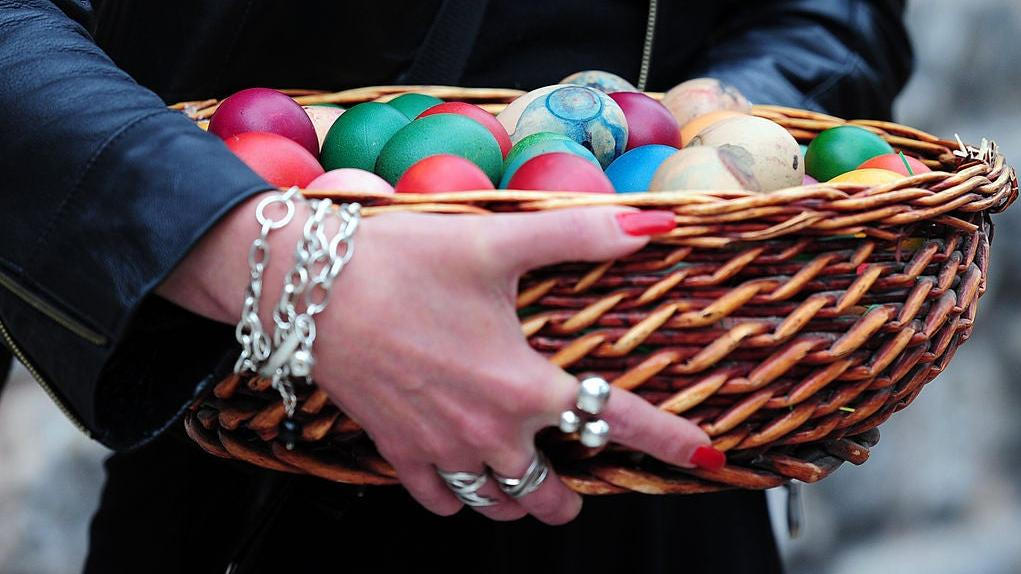Dye Some Freakin' Eggs
Kids or no kids, make this the year you dye your hard-boiled eggs. Just for fun.
Hard-boiled eggs are an austere egg snack, as egg snacks go. They're billed as a utilitarian protein source, individually wrapped and sold on clammy convenience store shelves. They're prepared in bulk, meant to be crammed into one's mouth and eaten on the go. But what if your hard-boiled eggs served another purpose? What if your speedy nutrition source was cheap, filling, and visually stunning? What if, kids or no kids, you embraced the egg-dyeing tradition of the Easter season to transform your hard-boiled eggs into a pretty little pastel handful?
Listen to me, reader: that pastel dream is within reach. It's time to embrace the Easter season and dye your hard-boiled eggs. Not for an egg hunt; not for cheap home decor; not for the satisfaction of someone's snot-nosed brats. Just for the hell of it.
History of dyeing eggs
First, you may ask: why do we dye eggs at all? As you might expect, the tradition has roots in Easter lore. Long before Christians lumbered around the Earth, eggs served as a pagan symbol of fertility and rebirth during the spring season. Later, Christians co-opted the symbol to represent the rebirth of Christ. But why dye the eggs?
According to Greek Orthodox tradition, colorful eggs harken back to Mary Magdalene, who was said to have wandered the Roman Empire, basket of eggs in hand, preaching the news of Christ's resurrection. When Mary encountered the Roman emperor Tiberius, he was skeptical of the resurrection. He told Mary that he'd take her word for it—but only if the eggs in her basket turned red as some sort of sign. Boom: the eggs turned red, and Mary made a believer out of Tiberius. Now, members of the Greek Orthodox church dye eggs on Holy Thursday, the annual holiday in commemoration of Christ's Last Supper.
Is it safe to eat dyed eggs?
I found a few sources suggesting that eggs dyed on Holy Thursday will last up to 40 days in the fridge, perhaps because of their holy nature. While I wouldn't recommend consuming 40-day-old boiled eggs, it's generally safe to eat dyed eggs depending on the dye you use.
First, be sure to boil your eggs thoroughly. (More on that here.) After boiling and cooling the eggs, you'll be ready to dye 'em. You'll want to use either food-safe coloring or DIY a produce-based natural dye. Keep in mind that the latter is more time-intensive. Either way, you'll be perfectly safe dyeing the shells.
Finally, you'll want to refrigerate dyed eggs if you're not eating them right away. Don't let your eggs hang out on the counter for longer than an hour—two hours, max—as you're decorating them. After that, enjoy the eggs for up to a week.
A little row of pastel-dyed egg soldiers in the fridge? Can you imagine how charmed you'll be? Trust me, friends: this is one seasonal craft you can complete on the fly. Maybe it'll fill you with a pleasant sense of nostalgia. Maybe you'll just get a kick out of getting creative. Either way, I can't recommend it enough.
